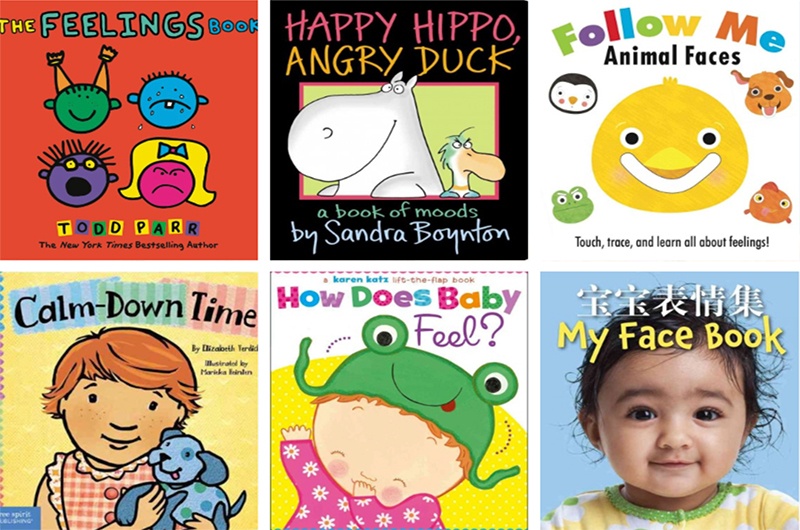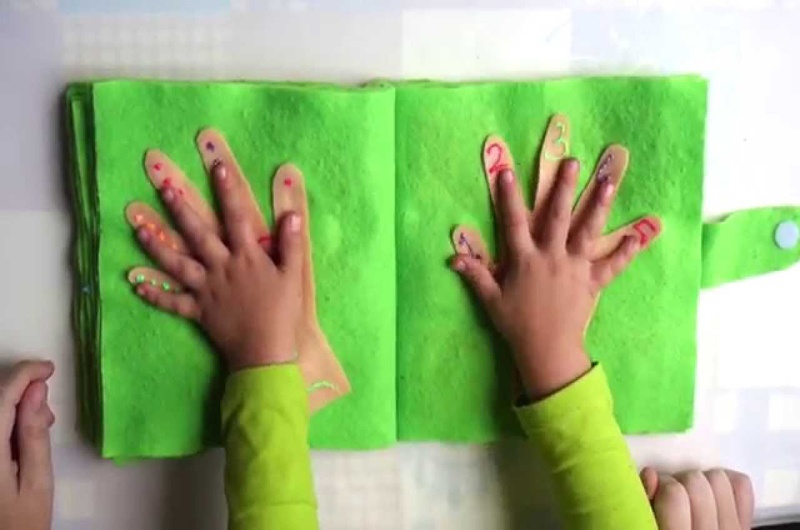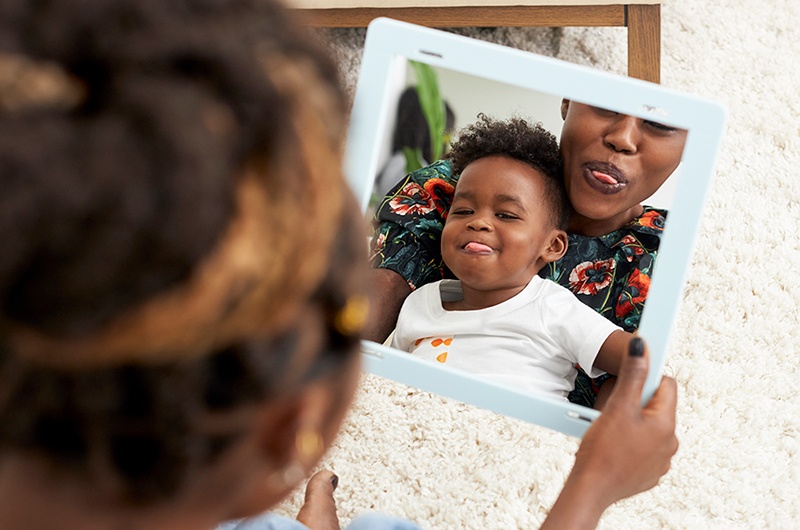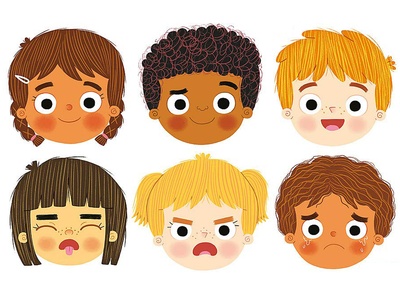Read, Baby, Read is a Free Library initiative focused on encouraging early literacy development among infants and young toddlers under two years old. We work with 12 participating libraries across Philadelphia to reach caregivers of all ages, providing resources that support early literacy skills, language development, and purposeful play. In addition, you can find early literacy tips and resources on our Instagram page @read.baby.read!
Each month, we bring you fun activity ideas with a theme based on the five early literacy practices from Every Child Ready To Read: Read, Sing, Write, Play, and Talk! So far, we’ve explored vehicles, animals, the body, water, food, and shapes!
This month is all about feelings!
READ
There are many fantastic board books about emotions available in the Free Library’s catalog. It’s easy to place holds online for free and schedule curbside pick-up at neighborhood libraries.
- The Feelings Book by Todd Parr
This colorfully illustrated book introduces children to the wide range of moods we all experience.
- Happy Hippo, Angry Duck by Sandra Boynton
This silly "books of moods" features a variety of fun animals.
- Follow Me: Animal Faces by Fhiona Galloway
Children can explore how different animals are feeling by using their fingers to trace the facial expressions on these die-cut pages.
- Calm-Down Time by Elizabeth Verdick
This simple and reassuring bilingual English-Spanish story helps little ones dealing with big emotions.
- How Does Baby Feel? by Karen Katz
Discover babies with lots of different emotions in this lift-the-flap book. See Sarah read it on Instagram! (Also check out What Does Baby Say?, where your child can lift the flaps to see what babies say when experiencing different moods.)
- My Face Book by Star Bright Books
Your child will love looking at the emotional facial expressions in these photos of babies from all over the world. Bilingual versions are available in Mandarin, Arabic, Hebrew, Burmese, Karen, and Somali. See Sarah read it on Instagram!
SING
Want to sing about feelings? "If You’re Happy and You Know It, Clap Your Hands" is a classic and there are lots of versions out there. In the following storytime, Sarah sings a version that involves other emotions in addition to happiness. Don’t know the words by heart? You can try following along with this karaoke sing-along video. There’s also a simply animated music video version called "If You’re Happy Happy Happy" or an instrument-friendly adaptation from Jbrary called "If You’re Happy and You Know It, Give a Shake." Jbrary has a whole YouTube playlist filled with lap bounces and rhymes all about feelings and emotions. You can even adapt the lyrics of familiar songs to make them about emotions, such as the "Emotions Hokey Pokey." For additional versions of popular children’s songs, check out Preschool Express, which includes the song "H-A-P-P-Y" set to the tune of "BINGO."
WRITE
When we talk about "writing" with babies, we often mean some sort of art activity. Art is a fantastic way to help little ones regulate and work through their emotions. Learn more about the social-emotional benefits of art! Finger painting is a great choice because your child will be fully immersed in the sensory experience of feeling the paint on their hands. There are many options for making your own paint at home, including "taste-safe" recipes that use yogurt, cornstarch, whipping cream, flour, or jello as a base. To make things even less messy, try "painting" with water—your baby is still getting all the fine motor benefits of finger painting without all the cleanup afterward!
PLAY
Play is important for all areas of child development, including emotional development. Dramatic or pretend play is a great way for children to learn about and "practice" emotions in a controlled and safe space. You can also use puppets or flannel board pieces (try this peek-a-boo version!) to introduce feelings and explore emotional situations with your baby. View more ideas for teaching children about emotions or read the following article on social-emotional development experiences and activities for even more tips!
There are also lots of DIY toys you can make to help children dealing with big emotions. Try making a calming jar, which is a great sensory toy for when your child is feeling overwhelmed. You can also make your own Busy Book (also known as a "quiet book") to use as a tool when your little one is frustrated or bored. Here are instructions for a no-sew version.
TALK
Talking to children about emotions helps them expand their emotional vocabulary, which is important for them when developing their mental health and emotional intelligence. Learning the words to describe what they’re feeling helps them articulate and work through their feelings better in the future! Use specific and diverse words to describe feelings as well—your baby learns new words best when hearing you use them yourself. Remember that you are your baby’s emotional role model!
When talking about emotions, try making the matching facial expressions as well. When your baby makes a facial expression, imitate it yourself to encourage bonding. To expand upon this activity, try adding a mirror! Make and name facial expressions while looking in the mirror with your baby.
Be sure to follow us on Instagram for daily tips and resources about early literacy as well as weekly virtual baby storytimes. And stay tuned for next month’s installment of this blog series with a brand new theme!
Read Baby Read’s team includes Early Childhood Specialists, Sarah Jacknis and Natasha Smith, and Program Coordinator Naisha Tyler. If you have questions about our program, feel free to email Naisha Tyler at TylerN @ freelibrary.org.
Read Baby, Read is made possible by a generous grant from the William Penn Foundation.
Have a question for Free Library staff? Please submit it to our Ask a Librarian page and receive a response within two business days.





